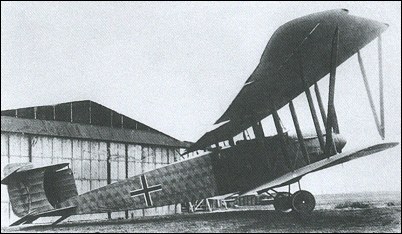|
| Believe it or not, this was a large four-engined bomber. This giant was a three times normal scale version of a typical two-seater; the engines were buried in the fuselage and geared together to drive the massive 7m Garuda propeller. Which is what gained this aircraft its entry in the Guinness Book of Records as being the largest single propeller aircraft ever built. It was said to be an eerie, weird experience to fly in it - the propeller was geared down to 545 rpm.
Only the one was flown; a second was under construction at the war's end.
German Giants
| Vahe David Demirjian, e-mail, 05.08.2020 06:02 I consider the R.II the most fighter-like bomber, because even though it had four piston engines, they were all buried in the nose and geared to drive one propeller. reply | | Barry, 23.05.2016 15:50 It is hard to believe that two of these monsters were built. The first flight was not until 1919 and with the four Mercedes DIVa engines buried in the fuselage it was said that it would have an endurance of 7 hours. It was claimed also that by only using two of the engines an endurance of 30 hours was possible. Talk was made of using it as a twelve seat passenger plane but this was stymied by the Allied War Commission.
Power plant 4 x 260 h.p. Mercedes DIVa
Span 138'4" Length 66'8" Height 23'4" Wing area 3,443 sq ft
Empty weight 17,640 lb Gross weight 26,640 lb
Maximum speed 81 mph Endurance 7 hours +
Armament 3 x machine guns two dorsal one ventral reply | | Dalhats Laudzafata Avicena, e-mail, 08.04.2014 14:26 Looks like a fighter, even though it was four engined bomber. reply | | dasanbi, 20.06.2011 05:16 It was said to be an eerie, weird experience to fly in it - the propeller was geared down to 545 rpm. reply |
|
Do you have any comments?
|
| 
COMPANY
PROFILE |





